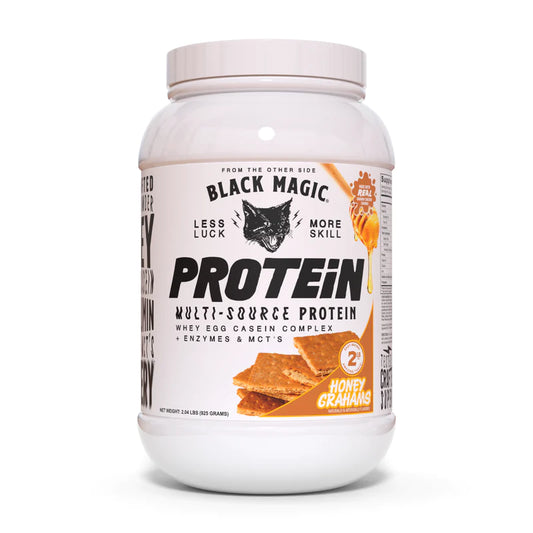Introduction
Having a strong grip is important for many sports and activities. From rock climbing to weightlifting, improving your grip strength can directly impact your performance. Not only that, but having a stronger grip makes everyday tasks like opening jars or carrying heavy bags easier. In this blog post, we’ll go over everything you need to know about grip strength - what it is, why it’s important, and most importantly, how to improve it.
What is Grip Strength?
Grip strength refers to the amount of force your hands and forearms can exert when gripping an object. It’s an important component of overall arm and hand strength. When we talk about grip strength, there are a few different aspects:
- Crushing grip strength - This is the ability to squeeze an object with force using your fingers and thumb. Things like gripping a hammer or crushing an object in your hand require crushing grip strength.
- Pinch grip strength - This refers to gripping an object between your thumb and fingers. Think about picking up a piece of paper or holding a pencil - those motions use pinch grip.
- Supportive grip strength - This is the ability to hold onto an object for an extended period of time, like carrying heavy grocery bags or holding onto monkey bars.
Grip strength relies on strong forearm muscles like the flexor digitorum profundus which control finger flexion, and the flexor pollicis longus which controls thumb flexion. Having powerful forearms and hands is key for overall grip strength.
Why is Grip Strength Important?
There are a few key reasons why having strong grip strength is important:
Sports performance - In sports like rock climbing, wrestling, tennis, and weight lifting, grip strength is a vital part of performance. Having powerful hands and forearms allows you to climb longer, grapple harder, and lift heavier weights.
Injury prevention - Weak grip and forearm strength can make you prone to elbow and wrist injuries, especially with repetitive motions like throwing a ball or swinging a racket. Stronger muscles help support your joints.
Everyday activities - From opening jars to carrying heavy objects, grip strength makes daily tasks much easier. Even things like turning keys, opening doors, and using tools benefit from having a strong crush grip.
Reduced risk of arthritis - Studies show that better grip strength is associated with lower rates of arthritis in the hands and wrists as we age. Building strength can help delay and prevent arthritis.
Overall fitness - Improving your grip strength can boost your overall muscular fitness. It’s an easy way to incorporate strength training into your routine.
As you can see, there are many great reasons to devote some time to improving your hand and forearm strength. Now let’s get into some effective ways to increase your grip strength.
How to Improve Your Grip Strength
Here are 5 of the best exercises and training methods to use if you want to boost your crushing, pinch, and supportive grip strength:
1. Hand Grippers
Hand grippers are a simple yet effective tool for building finger, hand, and forearm strength. These are the small devices that you squeeze repeatedly to work your crush grip. They come in a variety of resistances, from light to heavy tension. Using hand grippers regularly can significantly improve your crushing and pinching grip strength. Aim for 3-4 sets of 10-15 repetitions per hand, about 3 times per week. Go for a weight where you cannot complete more than 15 reps per set.
2. Farmers Walks
Farmers walks target your supportive grip strength by making you hold heavy weights for an extended period. To do them:
- Hold a dumbbell in each hand with an overhand grip
- Keep your arms straight down at your sides
- Walk forward for 20-30 meters (or as far as you can)
- Rest and repeat for 2-3 sets
Use heavy dumbbells - a weight you can hold for about 30 seconds. Farmers walks are great for forearms, hands, and shoulders.
3. Rock Climbing
One of the best ways to build incredible grip strength is with rock climbing and bouldering. Having to support your entire bodyweight by gripping onto thin holds forces your hands, fingers and forearms to get super strong. Try indoor climbing 2-3 times per week to see major improvements. Even just bouldering on low routes can make a big difference.
4. Towel Pull-Ups
If you have access to a pull-up bar, towel pull-ups are a great exercise for improving grip strength. Drape a towel over the pull-up bar and grip it tightly on either side. Then perform pull-ups - the unstable, shifting towel forces your hands to constantly readjust, working the muscles of your fingers, hands and forearms much harder than regular pull-ups. 2-3 sets of max reps will do the trick.
5. Plate Pinches
For this exercise, you’ll need a couple of weight plates with smooth sides. Simply squeeze a weight plate between your thumb on one side and fingers on the other to work your pinch grip. Hold for 5-10 seconds, rest, and repeat for 15-20 reps per hand. You can also stack multiple plates to increase the tension. Plate pinches target the muscles that let you grip and control objects between your fingers and thumb.
Grip Training Tips
To get the most out of your grip strength training, keep these tips in mind:
- Train frequently - Grip muscles respond well to frequent training. Aim for at least 3 grip workouts per week.
- Use thick bars - Thicker pull-up bars, farmer’s handles, and implements challenge your grip more.
- Add hangs - Dead hangs from a pull-up bar in between sets help strengthen connective tissue in the hands and forearms.
- Switch implements - Use different equipment like thick ropes, towels, balls, and sledgehammers to vary the stimuli.
- Time contractions - Holding grippers, hangs, and pinches for 3-5 seconds boosts time under tension for maximum strength gains.
- Rest adequately - Give your hands and forearms at least 48 hours of rest between grip sessions to recover properly.
- Support your joints - Wrist wraps, grips straps, and finger trainers can help take pressure off joints as you build strength.
Be patient - Grip strength often takes many weeks of consistent training to notice big improvements. Stick with it.
Adding a few grip-focused exercises into your current routine just a couple times a week can pay huge dividends in your hand and forearm strength. Over time, you’ll be able to squeeze, pinch, and hold onto objects much harder without your grip tiring out as quickly. And remember, improved grip strength will carry over to better performance in your sport or activity of choice. Your hands are an important asset - give them the strength training they deserve!
Conclusion
Having powerful, fatigue-resistant hands and forearms is so valuable, both for sports and everyday life. Follow the strategies outlined in this article - hand grippers, farmers walks, rock climbing, towel pull-ups, plate pinches, and more - to take your grip strength to the next level. Be consistent with your training, use a variety of exercises and equipment, and your crushing, pinching, and supportive grip will improve dramatically.
Featured collection
-
Black Magic BZRK
Regular price $44.00 USDRegular priceUnit price / per -
Super Human Pump, Stimulant Free Preworkout
Regular price $48.00 USDRegular priceUnit price / per -
Black Magic Protein
Regular price $44.00 USDRegular priceUnit price / per -
 Sold out
Sold outEssential Preworkout
Regular price $39.00 USDRegular priceUnit price / per



